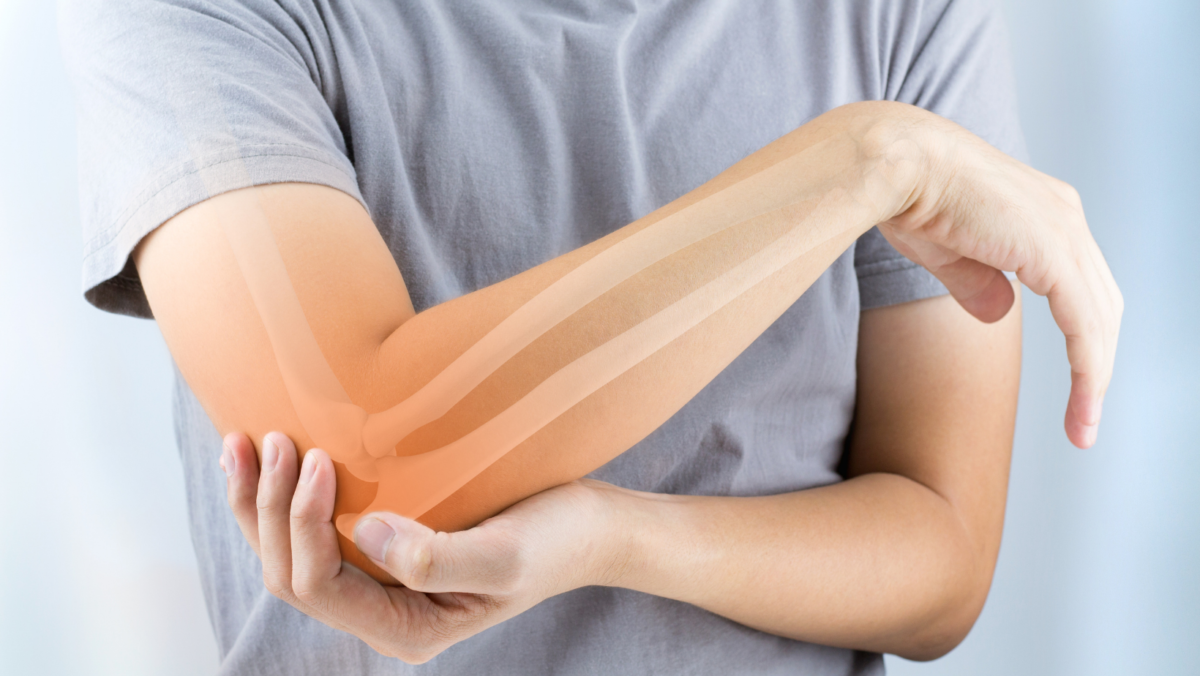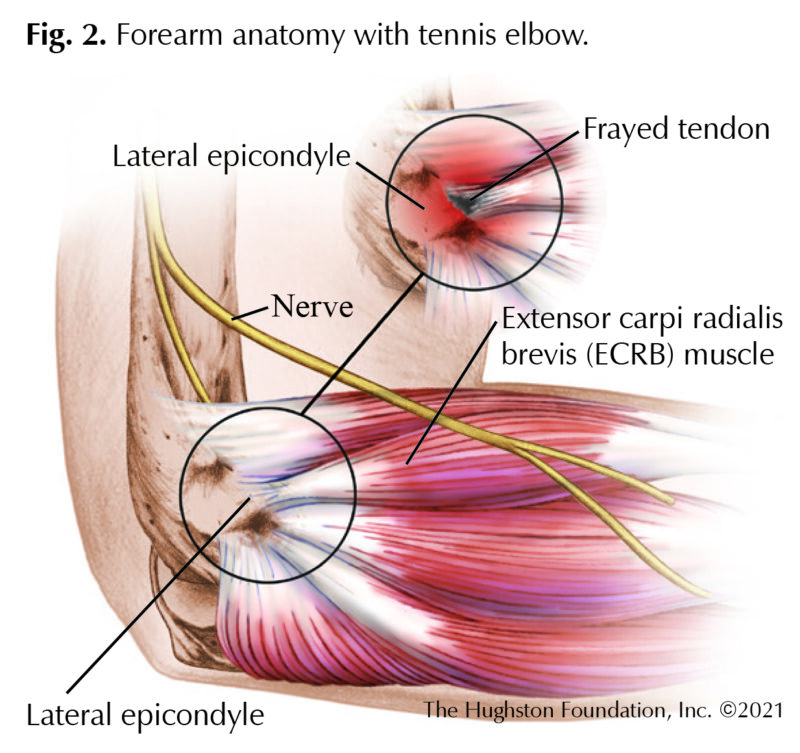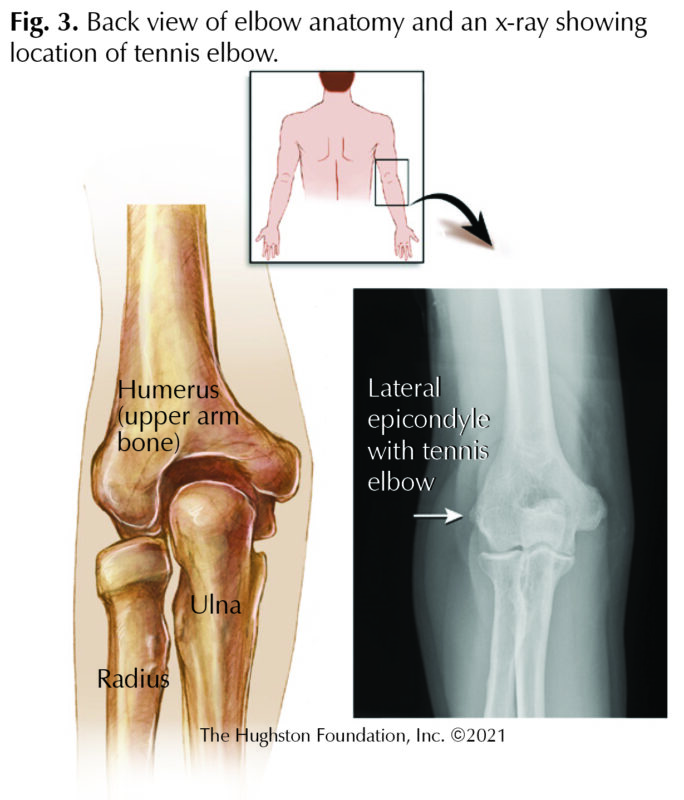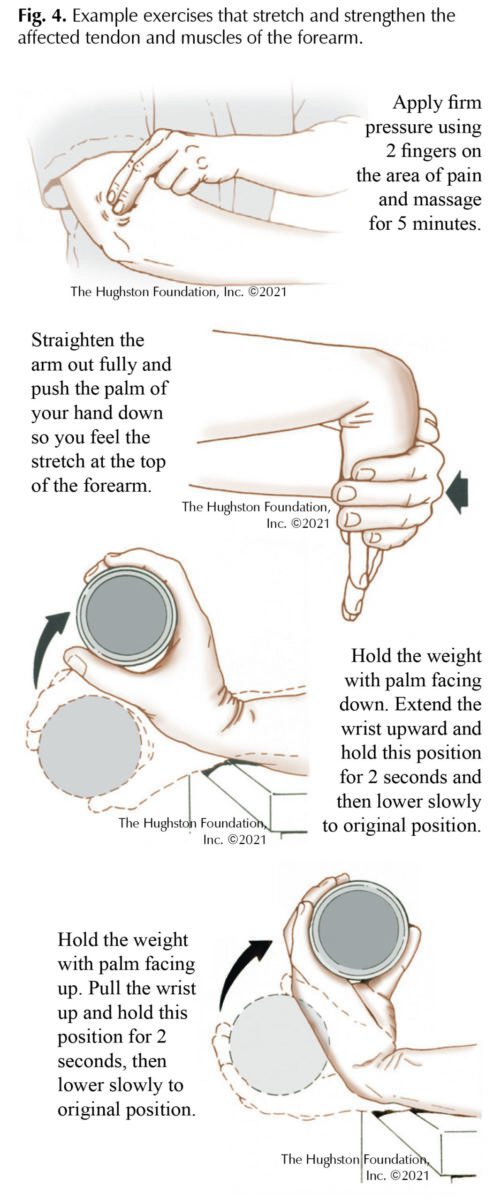
Lateral epicondylitis (tennis elbow) is a type of tendon injury at the elbow caused by overuse of the forearm muscles. Physicians gave it the nickname because of its association with racquet sport athletes; however, tennis elbow can also develop from everyday work or recreational activities (Fig. 1) Patients who experience lateral epicondylitis feel pain laterally, or toward the outside of the elbow, and it usually develops gradually over time.

Elbow anatomy
Tennis elbow affects the tendons (attach muscle to bone) of the forearm muscles that allow us to bend, straighten, and rotate the forearm (Fig. 2). The bony projection on the outside of the elbow is the lateral epicondyle. It extends off the condyle, which is the rounded, knuckle-like bone ending of the humerus (upper arm bone), that articulates with the radius and ulna (forearm bones) to form the elbow joint. The tendon involved attaches to the extensor carpi radialis brevis (ECRB) muscle that originates from the lateral epicondyle, which is the area where most patients experience pain with tennis elbow.

How did I get tennis elbow?
Many patients ask, how do I have tennis elbow if I don’t play tennis? Physicians refer to the injury as tennis elbow since tennis players often use vigorous repetitive movements that involve the forearm muscles while playing the sport. However, risk factors include both occupational and recreational activities. For example, painters, plumbers, and carpenters have a higher risk for injury. Tennis elbow is also most common in patients between the ages of 30 and 50. Sometimes, the symptoms of tennis elbow are idiopathic, or without an identifiable cause.
If you are a tennis player and you experience elbow pain, the symptoms can be caused by your technique or equipment. For example, a stiff racquet and strings can cause an increase in the force transmitted to the arm, and the vibrations or oscillations can contribute to the development of tennis elbow. Grip position, arm strength, and where and how the ball hits the racquet can also affect the amount of muscle damage that occurs over time.
Treatment


Your orthopaedist can diagnose the disorder with a physical examination of the elbow and forearm; however, your doctor may order additional tests to rule out other potential sources of pain. These can include x-ray (Fig. 3), magnetic resonance imaging (MRI scan that shows the bones, muscles, tendons, and ligaments), ultrasound (dynamic images of muscles, tendons, and ligaments), or EMG (nerve studies of the neck and arm).
For most patients, tennis elbow symptoms resolve without surgery. For treatment, your doctor may prescribe anti-inflammatory medications, recommend rest from the offending activity, and suggest the use of a counterforce brace that helps to off-load the affected tendons. Your orthopaedist can also inject the area with corticosteroid medication to help relieve the pain and inflammation. An overuse injury takes time to develop and it takes time and patience for the symptoms to resolve as well.
Consultation with a physical therapist can assist with the recovery process. A physical therapist can instruct you in exercises that stretch the affected extensor tendon and other tendons and muscles of the forearm, and gently strengthen the extensor muscles (Fig. 4). In rare circumstances where these treatments are not effective, your orthopaedist may recommend surgery. If you and your doctor decide that surgical treatment is appropriate, your surgeon will remove the diseased or damaged parts of the tendon and repair the healthy muscle and tendon back to the bone.
Recovery
Once symptoms resolve, most patients can return to their previous level of activity. However, there is a risk of symptoms returning over time. If patients undergo surgical treatment of lateral epicondylitis, the recovery may require a period of immobilization (no elbow motion) followed by gradual return of movement and progression of gentle strengthening exercises. Your doctor will let you know when you can safely return to sports or other more
rigorous activity.
The good news
Tennis elbow is a painful condition of the elbow caused by overuse of certain forearm muscles, typically in the dominant arm. The good news is that in the majority of cases, for athletes and non-athletes alike, it can be treated without surgery. If you have pain to the outside of your elbow that has developed gradually over time, see your doctor to find out if tennis elbow is the cause of your pain. Once you see your physician, you will learn what adjustments you can make to your everyday activities and what treatments are right for you.
Author: Kelcey Dunaway, DO | Columbus, Georgia
Last edited on July 14, 2021